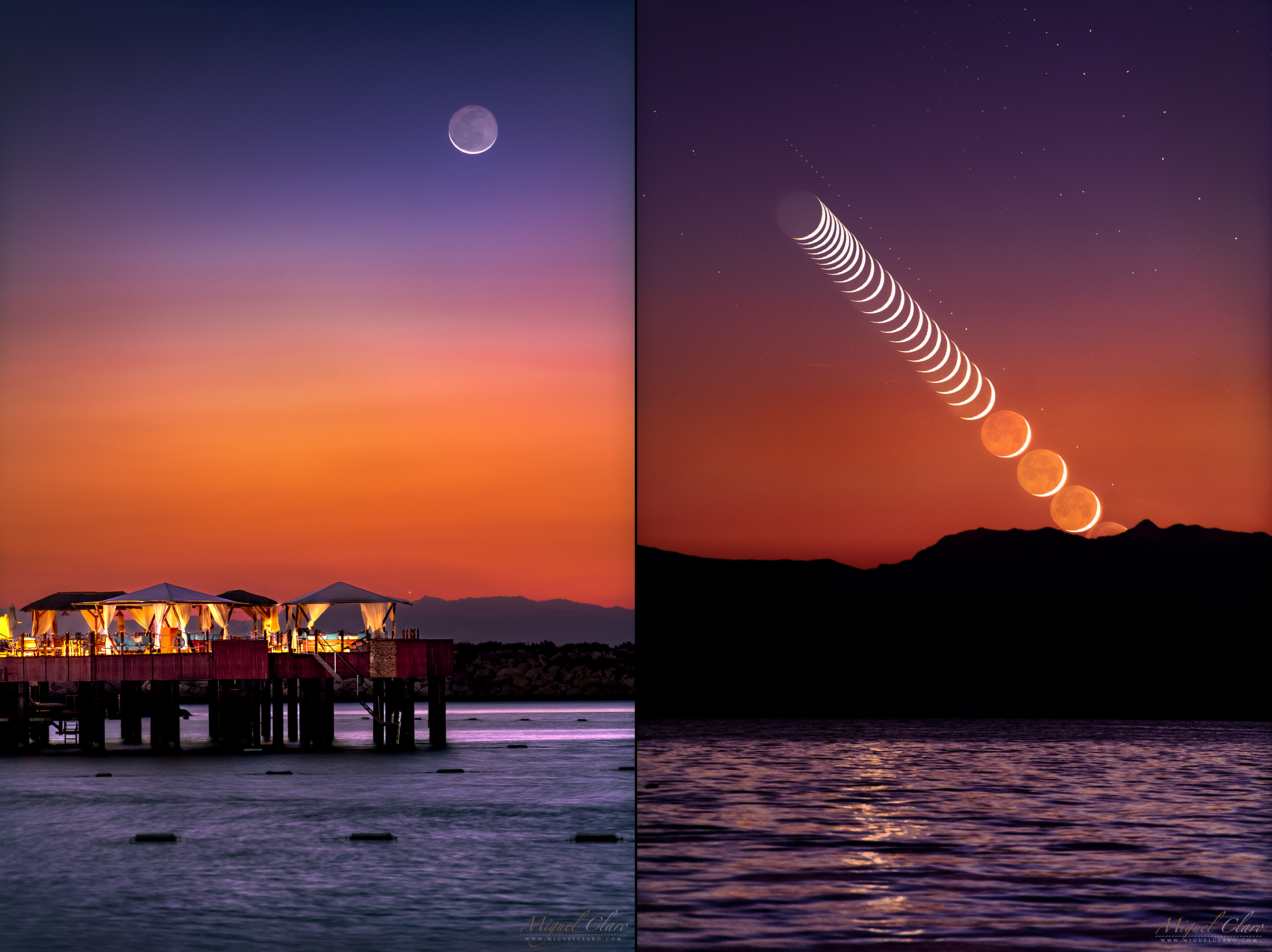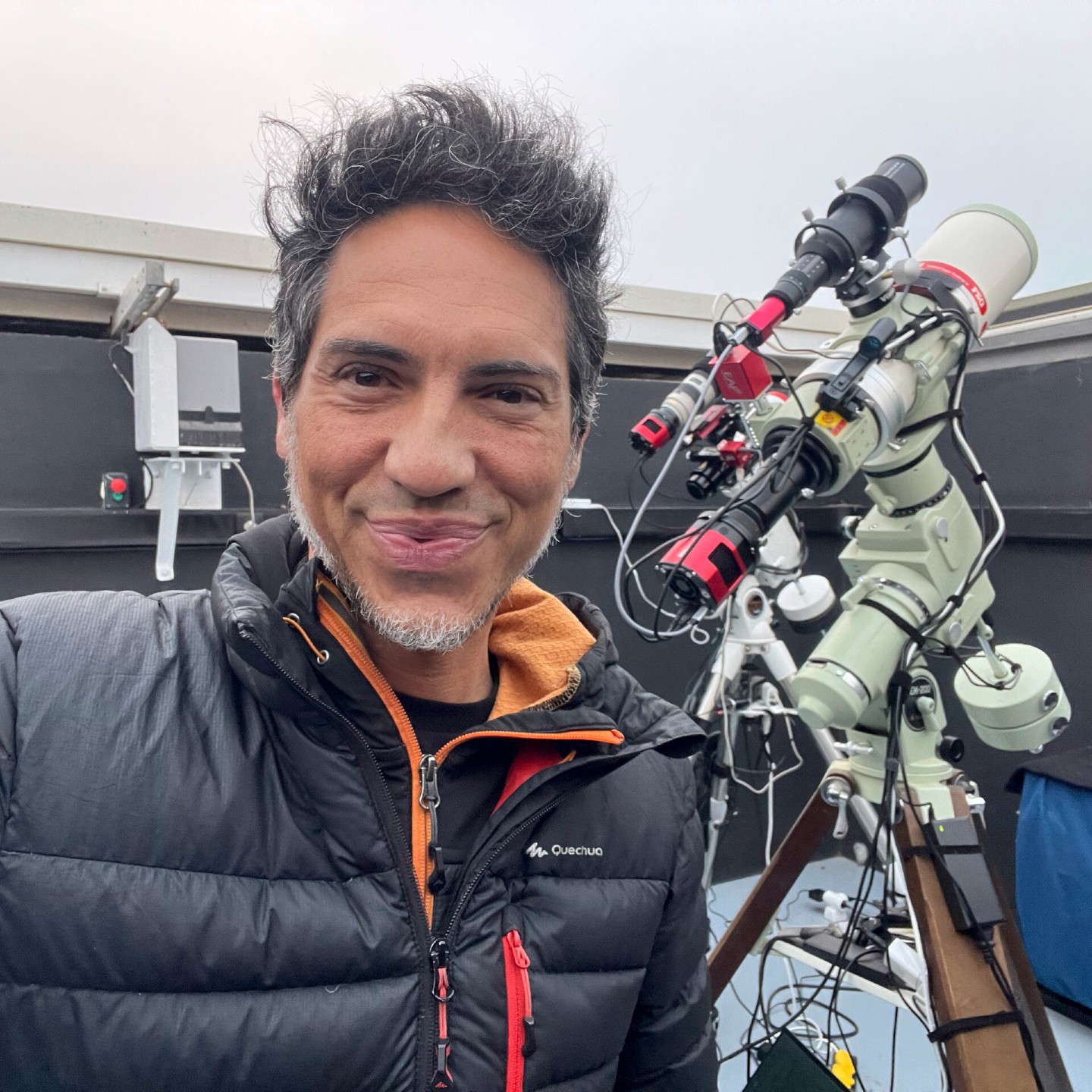New moon glows with 'Earthshine' in incredible time-lapse photo series
The planet Mercury makes an appearance, too.
Miguel Claro is a professional photographer, author and science communicator based in Lisbon, Portugal, who creates spectacular images of the night sky. As a European Southern Observatory Photo Ambassador and member of The World At Night and the official astrophotographer of the Dark Sky Alqueva Reserve, he specializes in astronomical "Skyscapes" that connect both Earth and the night sky. Join Miguel here as he takes us through his photograph "Colorful Scenes Before and After the New Moon Reveals a Lunar Earthshine at Dawn and Dusk."
Captured one day before the new moon and a partial solar eclipse, against the colorful background in the morning twilight of Antalya, Turkey, the image reveals not only a smiling waning crescent moon but also a rare view of planet Mercury.
Mercury is the inner planet closest to the sun and, for that reason, is very difficult to see and spot in the eastern sky. Looking carefully to the end of the pier near the last lounge roof in the photo, we can find the orange bright dot.
Related: What is the moon phase today? Lunar phases 2023
Read more: How to photograph the moon using a camera: techniques, kit, and settings

Looking for a telescope to see the moon? We recommend the Celestron Astro Fi 102 as the top pick in our best beginner's telescope guide.
On the righthand image, captured with the same 200mm lens and almost from the same location on a pier over the beach, reveals the scene while looking to the opposite direction of the sky. This time we are facing to the west just two days after the new moon and 30 minutes after the sunset.
Earthshine is again visible, but the scene has slightly changed due to the moon's position relative to the sun. Earthshine was described and drawn for the first time by Leonardo da Vinci about 500 years ago in his Codex Leicester writings; he explained the phenomenon in the early 16th century, when he realized that both Earth and the moon reflect sunlight at the same time.
Light is reflected from the Earth to the moon, and back to the Earth, as Earthshine. Both images were taken in late 2022. The image at right shows a sequence of shots in time lapse mode, while the moon's Earthshine of last October was setting above the Bey Mountains and close to Mediterranean Sea.
Breaking space news, the latest updates on rocket launches, skywatching events and more!
Want to see the moon or take great photos of it? Be sure to see our guides on the best telescopes and best binoculars that can help. Don't forget to also check out our guides on the best cameras for astrophotography and best lenses for astrophotography to get started.
To see more of Miguel Claro's work, please see his website or follow his stories on Instagram at www.instagram.com/miguel_claro .
Editor's Note: If you snap your own photos of the moon and would like to share them with Space.com’s readers, send your photo(s), comments, and your name and location to spacephotos@space.com.
Follow us @Spacedotcom, or on Facebook and Instagram.
Miguel Claro is a professional photographer, author and science communicator based in Lisbon, Portugal, who creates spectacular images of the night sky. As a European Southern Observatory photo ambassador, a member of The World At Night and the official astrophotographer of the Dark Sky Alqueva Reserve, he specializes in astronomical skyscapes that connect Earth and the night sky.


